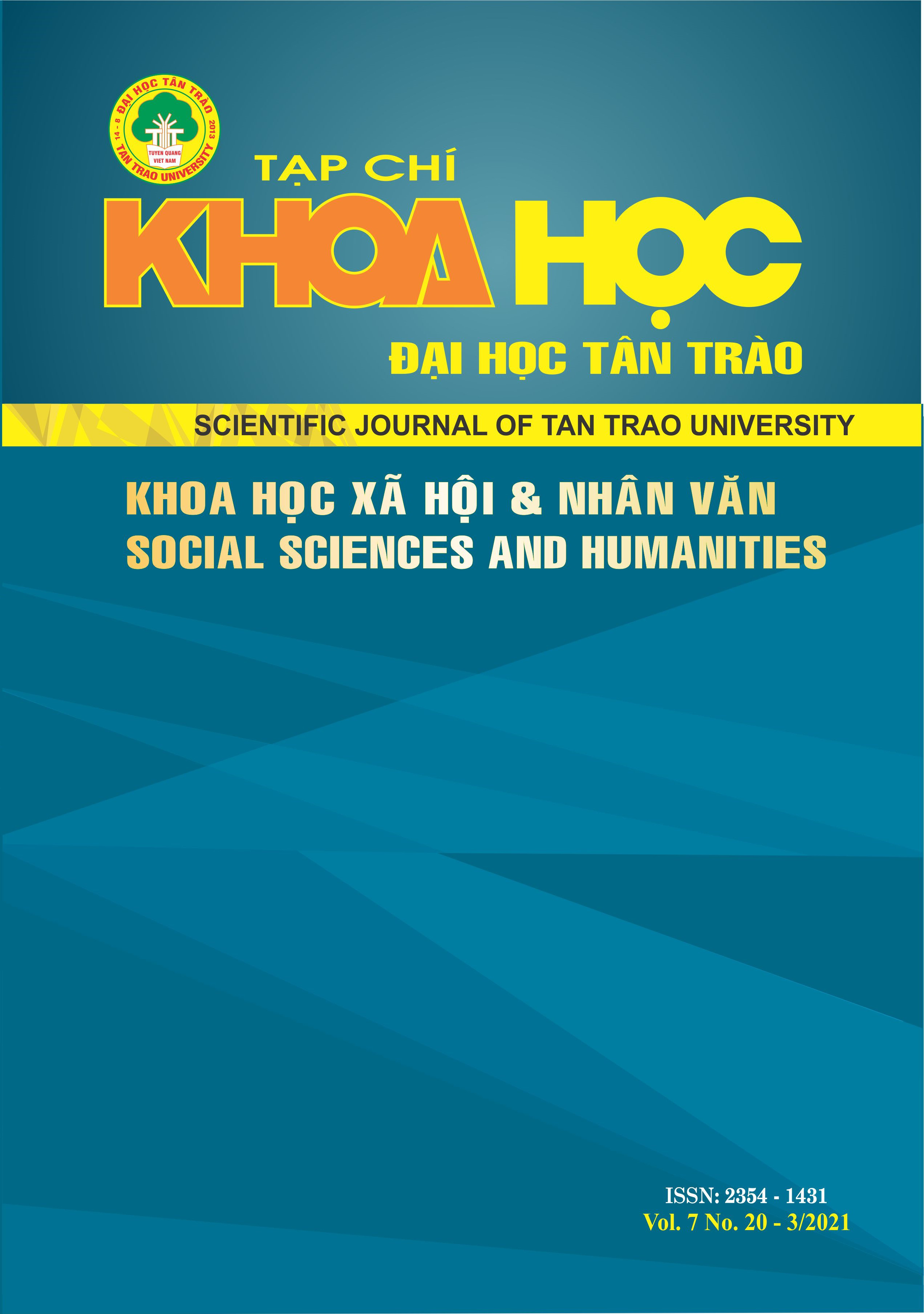“TRÌ BIỆT” NGHĨA TRONG CẬU ẾCH CỨU TOKYO CỦA HARUKI MURAKAMI
DOI:
https://doi.org/10.51453/2354-1431/2021/485Từ khóa:
Trì biệt, “Super-Frog Saves Tokyoâ€, Derrida, MurakamiTóm tắt
“Trì biệt” là khái niệm triết học về ngôn ngữ do Jacques Derrida đưa ra. Theo đó, mọi lời nói (hoặc viết) đều bị cưỡng lại hoặc làm cho khác đi về mặt nghĩa trong bối cảnh giao tiếp. Trong đó, dấu ấn chủ quan và khách quan luôn đối thoại nhau. Chúng tôi vận dụng vào nghiên cứu cách biểu nghĩa qua các hình tượng trong truyện ngắn Cậu ếch cứu Tokyo của Murakami, để cho thấy các lớp nghĩa ẩn trong tác phẩm.
Tải xuống
Tài liệu tham khảo
[1] John Wray (2004). “Haruki Murakami - The Art of Fiction”, No.182. (Summer), The Paris Review.
[2] Virginia, Yeung (2011). A Narratological Study of Murakami Haruki’s “Norwegian Wood” and “Sputnik Sweetheart” – Time, Voice and Focalisation, Transnational Literature, May, Vol. 3, No. 2.
[3] Virginia, Yeung (2013). “Equivocal Endings and the Theme of Love in Murakami Haruki’s Love Stories”, Journal Japanene studies Vol. 33, p.279-295.
[4] Lois, P. Z., Wendy, B. F. (Eds) (1995). Magical Realism: Theory, History, Community, Duke University Press, Durham & London.
[5] L. Jacquelyn, Zuromsk. (2004). Getting to the Pulp of Haruki Murakami’s Norwegian Wood: Translatability and the Role of Popular Culture, Orlando, Florida, USA, B.S. University of Central Florida.
Tải xuống
Đã Xuất bản
Cách trích dẫn
Số
Chuyên mục
Giấy phép

Tác phẩm này được cấp phép theo Giấy phép Quốc tế Creative Commons Attribution-ShareAlike 4.0 .
Bài báo được xuất bản ở Tạp chí Khoa học Đại học Tân Trào được cấp phép theo giấy phép Ghi công - Chia sẻ tương tự 4.0 Quốc tế (CC BY-SA). Theo đó, các tác giả khác có thể sao chép, chuyển đổi hay phân phối lại các bài báo này với mục đích hợp pháp trên mọi phương tiện, với điều kiện họ trích dẫn tác giả, Tạp chí Khoa học Đại học Tân Trào và đường link đến bản quyền; nêu rõ các thay đổi đã thực hiện và các nghiên cứu đăng lại được tiến hành theo cùng một bản quyền.
Bản quyền bài báo thuộc về các tác giả, không hạn chế số lượng. Tạp chí Khoa học Tân Trào được cấp giấy phép không độc quyền để xuất bản bài báo với tư cách nhà xuất bản nguồn, kèm theo quyền thương mại để in các bài báo cung cấp cho các thư viện và cá nhân.
Mặc dù các điều khoản của giấy phép CC BY-SA không dành cho các tác giả (với tư cách là người giữ bản quyền của bài báo, họ không bị hạn chế về quyền hạn), khi gửi bài tới Tạp chí Khoa học Đại học Tân Trào, tác giả cần đáp ứng quyền của độc giả, và cần cấp quyền cho bên thứ 3 sử dụng bài báo của họ trong phạm vi của giấy phép.






